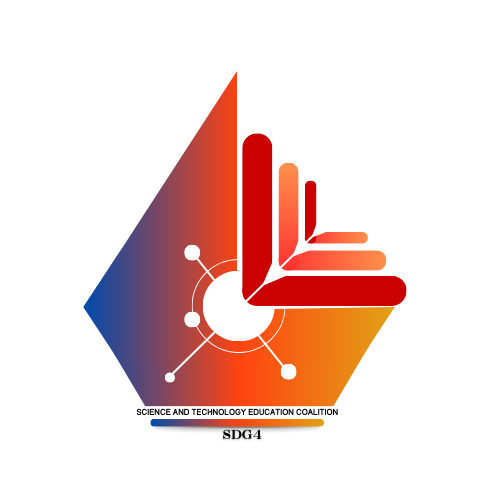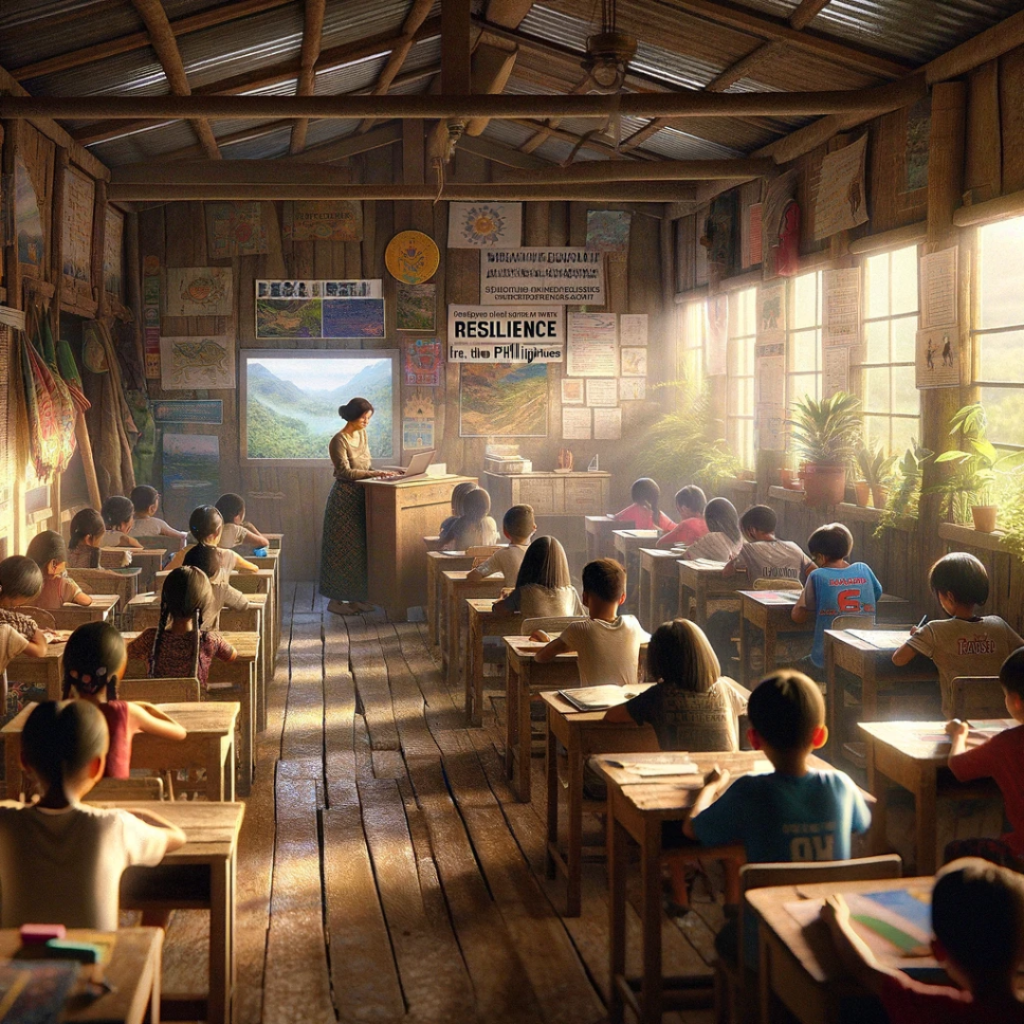Special Release of Electronic Paper for Science and Technology Education
The discourse “Resilience in the Face of Crisis: A Multi-Dimensional Analysis of Community and Church Roles in Disaster Preparedness and Response” encapsulates the critical themes of resilience, comprehensive analysis of multiple factors, and the pivotal roles of communities and religious institutions in disaster management

In the wake of recent seismic shocks in Mindanao, there has been an increasing emphasis on the role of local communities in disaster risk reduction. Recognizing this need, a pivotal discussion was planned for December 22, 2023, with a focus on how communities, including churches, local officials, and household members, can contribute effectively to disaster preparedness and recovery efforts.
The Event in Mindanao: On December 22, a comprehensive discussion was held, aimed at discussing deeper into the role of the community in Disaster Risk Reduction. This event was particularly significant given the recent series of shocks in Mindanao. Attendees, including community members, and church leaders, gathered at the FVR Alliance Church in Barangay Fatima to discuss strategies and structures for actions to be taken before, during, and after disasters.
A key component of this gathering was a Focus Group Discussion (FGD), designed to capture the community’s viewpoints on risk assessment, incorporating factors like hazards, exposure, and vulnerability. This FGD played a crucial role in understanding how communities perceive risks and their preparedness levels.
Outcomes and Insights: The insights from the FGD were instrumental in shaping future strategies to mitigate the impact of potential seismic shocks. The discussion highlighted the importance of direct engagement with community members to gather valuable information, enhancing disaster risk reduction efforts at the local level. A call was made for Sangguniang Kabataan (SK) and Barangay officials to join these discussions, emphasizing the theme, “It takes a community to Bounce Forward.”
Post-Event Reflections: Following the successful event in Mindanao, a post on the success of the discussion was shared (by the speaker Joshua Vidal). The post thanked FVR Alliance Church in GenSan, Mindanao, for hosting the conversation, and expressed hope for a more sustainable and resilient future. The discussion was not just an end in itself but a starting point for ongoing efforts in building community resilience.
Next Steps: As a follow-up to the event, lectures focusing on the synthesis and reflections from the discussion will be held at the Department of Science in Basic Education (DSBE) on January 3, 2024, in Imus, Cavite, Philippines. These lectures aim to further disseminate the knowledge and insights gained, and to continue the momentum in building a more prepared and resilient community in the face of disaster risks.
Prepared, Not Scared: Imus Lecture Explores Multi-Dimensional Approach to Community Resilience

Following the insightful discussions and FGD held in Mindanao, the focus shifted to the educational sector with a special lecture at UCC Lounge-Science Department in Imus, Cavite. This event marked the first day of school, setting a tone of proactive learning and community engagement for the academic year.
The lecture titled “Community Resilience in the Face of Crisis: A Multi-Dimensional Analysis of Community and Church Roles in Disaster Preparedness and Response” not only served as an academic forum for discussing the roles of different community sectors in disaster management but also included a segment dedicated to the “Key Aspects of Disaster Risk Reduction (DRR).” This segment focused on four critical components:

The lecture pointed out that actions to reduce risks posed by climate variability are essential components of modern DRR strategies.
The inclusion of these key aspects aimed to provide students, and faculties with a holistic and strategic framework for understanding and engaging in disaster risk reduction, preparing them to contribute meaningfully to community resilience efforts in their future careers and civic engagements.
Moreover, the lecture “Community Resilience in the Face of Crisis: A Multi-Dimensional Analysis of Community and Church Roles in Disaster Preparedness and Response” featured a detailed discussion on the two critical phases of disaster management: Preparation and Survival. As highlighted in the lecture, these phases are interconnected through key elements such as food, water, shelter, and communication—components that are essential throughout the disaster management cycle.

Key Points Discussed in the Lecture:
- Preparation:
- The emphasis was on the importance of being prepared before a disaster strikes.
- Key preparation strategies include:
- Ensuring a supply of non-perishable food.
- Securing clean drinking water.
- Making sure the shelter is safe and knowing where to go if it isn’t.
- Establishing reliable ways to communicate with family and emergency services.
- Survival:
- This phase was discussed in terms of what to do during and after the disaster to stay safe.
- The survival phase involves:
- Evacuation protocols, including knowing when and how to leave the area safely.
- Mapping and planning to navigate during a disaster.
- Sustainability, emphasizing the importance of maintaining these efforts over time, especially after the disaster has passed.
The lecture also addressed the “How? When?” aspects, stressing the importance of knowing the methods (how) and timing (when) for effective preparation and survival actions. This part of the discussion highlighted that the considerations for preparation and survival are applicable before, during, and after a disaster, demonstrating the cyclical nature of disaster risk management.
The graphical representation provided in the lecture served as a visual aid to help students understand the nexus between preparation and survival, as well as the importance of a proactive approach to disaster risk management that includes planning, action, and sustainability. This comprehensive analysis was aimed at equipping the participants with the knowledge to move systems within their control towards better disaster resilience.
Lecture Highlights:
- The lecture emphasized the importance of a multi-dimensional approach to understanding and enhancing community resilience.
- It underscored the vital roles that communities and churches can play in disaster preparedness and response.
- The event provided an opportunity for academic discourse, blending theoretical knowledge with practical insights from the recent experiences in Mindanao.
Impact and Future Implications: This educational initiative underscored the importance of integrating disaster risk reduction into academic curricula. By fostering a deeper understanding of community resilience among students, the lecture aimed to equip future leaders with the knowledge and skills necessary to effectively manage and respond to crises. It also reinforced the idea that disaster preparedness is a collective responsibility, transcending beyond individual communities to include educational institutions.
Continuing the Journey: The lecture at UCC Lounge-Science Department represents another step in the ongoing journey towards building a more resilient society. As these discussions and educational initiatives continue, they contribute significantly to a broader understanding and implementation of effective disaster risk reduction strategies across the Philippines.
for further details of the synthesis report, please stay-tuned of the preprint publication here: https://papers.ssrn.com/sol3/papers.cfm?abstract_id=4682994





Leave a comment